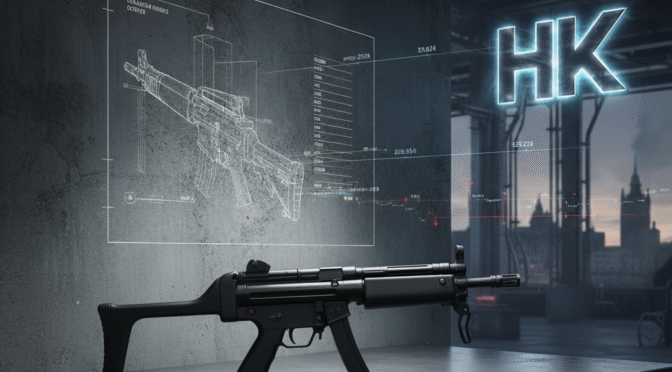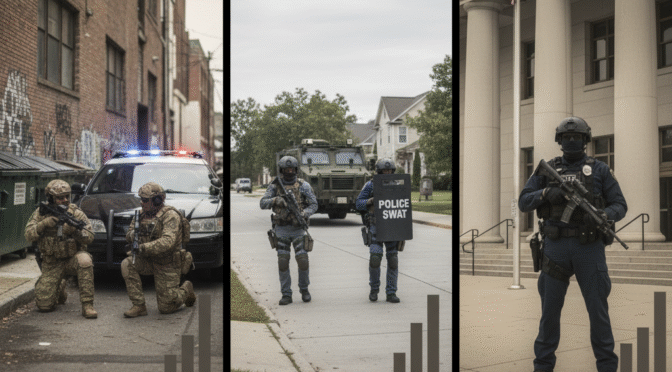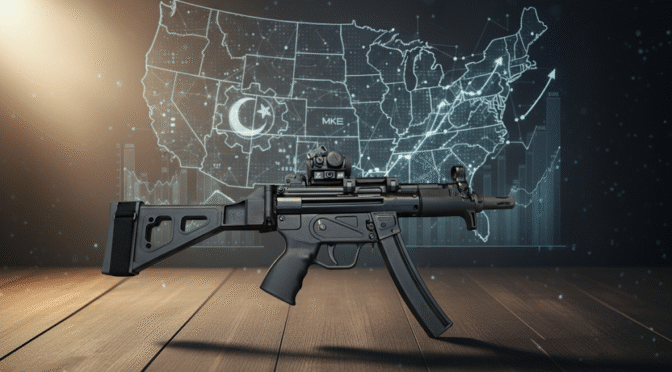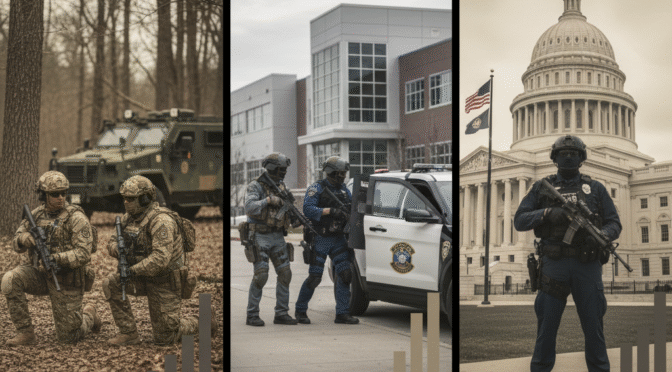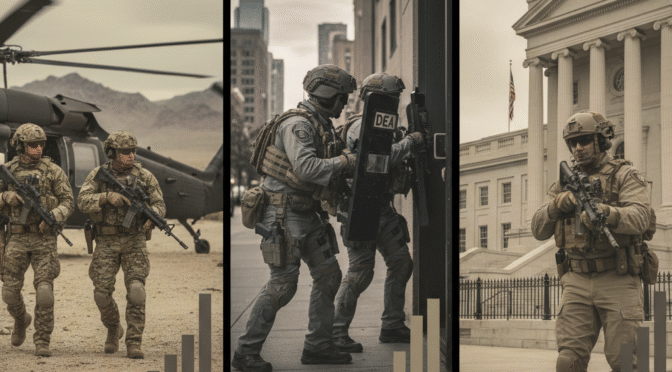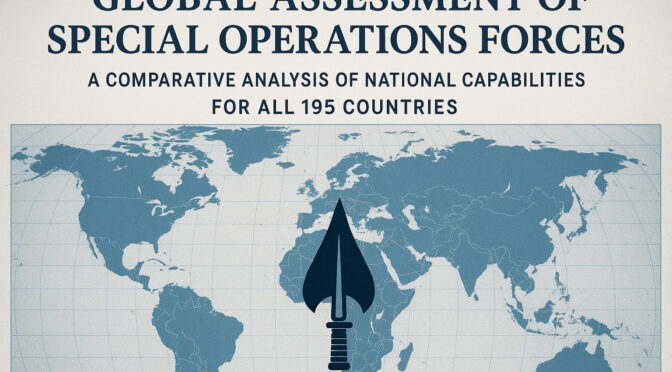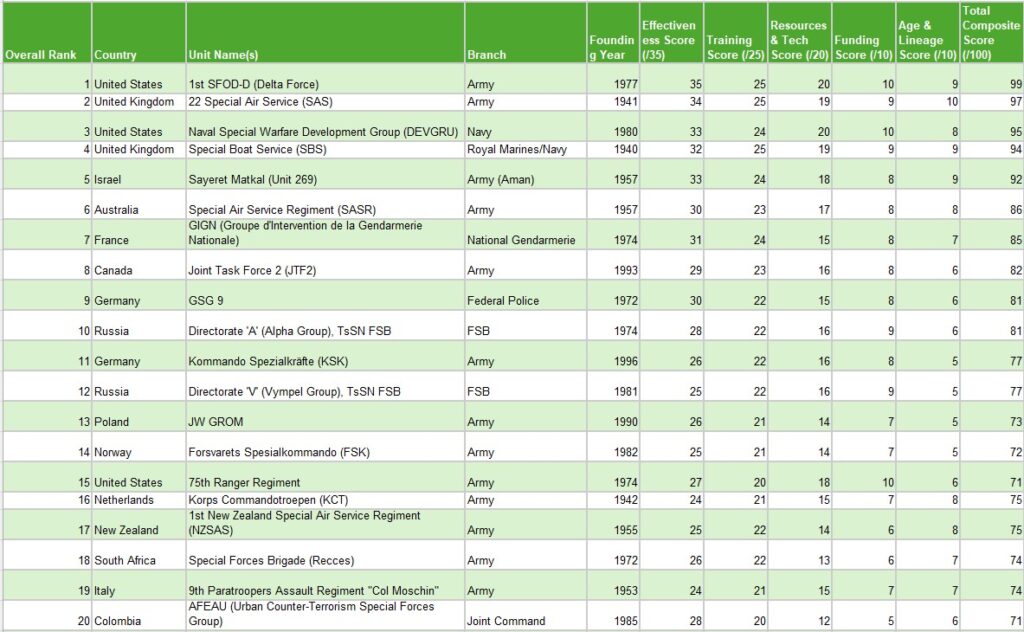The United States firearm suppressor market in Q3 2025 is defined by robust growth and a unique, time-sensitive regulatory landscape. Valued between approximately $388 million and $1.1 billion globally, with the U.S. accounting for over 80% of demand, the market is projected to expand at a Compound Annual Growth Rate (CAGR) of 5-8% over the next several years.1 This expansion is fueled by a fundamental shift in consumer priorities toward hearing safety, alongside sustained demand from tactical, hunting, and recreational shooting communities.3 While the broader firearms industry faces economic headwinds from inflation and high interest rates, the specialized suppressor segment continues to thrive, driven by technological innovation and an increasingly sophisticated customer base.6
The market is currently operating within a paradoxical regulatory environment that has created a temporary but significant purchasing window. The widespread adoption of the Bureau of Alcohol, Tobacco, Firearms and Explosives (ATF) eForms system has dramatically reduced National Firearms Act (NFA) Form 4 processing times to historic lows, often just a matter of days or weeks.8 This has effectively removed the long wait times that historically deterred many potential buyers. However, the passage of the “One Big Beautiful Bill Act” is set to eliminate the $200 NFA tax stamp effective January 1, 2026.11 While this removes the financial barrier, it is widely anticipated to trigger an unprecedented surge in demand that, coupled with potential ATF budget cuts, will likely overwhelm the system and lead to extreme processing delays in 2026 and beyond.8
Leading brands such as SilencerCo, Dead Air Armament, SureFire, and Rugged Suppressors continue to hold significant market share, but face intense competition from innovators like HUXWRX, B&T, CGS Group, and Otter Creek Labs, who are pushing the technological envelope.1 Key technological trends are shaping product development and consumer sentiment. These include the widespread adoption of modular designs that offer configurable lengths, the industry’s coalescence around the universal 1.375×24 “HUB” mounting standard, and the maturation of low back-pressure, or “flow-through,” technology enabled by advanced additive manufacturing (3D printing).15
This report’s principal finding is that the market has bifurcated. Consumer choice is no longer driven by a simple quest for the “quietest” can, but by a system-level approach that matches a suppressor’s design philosophy to its intended host weapon. On one side are traditional baffle suppressors that maximize sound reduction, best suited for bolt-action rifles and less gas-sensitive platforms. On the other are advanced low back-pressure systems engineered to preserve the reliability and enhance the shooter’s experience on semi-automatic firearms like the AR-15. Consequently, consumer sentiment is increasingly nuanced, prioritizing a suppressor’s holistic performance—including its impact on host weapon function, gas blowback, and mounting versatility—over singular metrics.
Market Landscape & Methodology
Defining the Modern Suppressor: Key Technical Distinctions
The contemporary firearm suppressor market is characterized by a high degree of technical sophistication. Products are no longer simple tubes with baffles but are highly engineered systems designed for specific applications. Understanding the following technical distinctions is critical to analyzing the market landscape.
Caliber Rating / Class
A suppressor’s primary classification is its caliber rating, which dictates the bore diameter and its ability to withstand the pressure and heat of specific cartridges. Key classes include:
- Rimfire: Designed for low-pressure cartridges like.22LR and.17HMR. Due to the high volume of unburnt powder and lead fouling from these rounds, user-serviceability (the ability to be disassembled for cleaning) is a mandatory feature.
- Pistol: Typically for 9mm or.45 ACP, these suppressors almost always require a “Nielsen device” or “booster” assembly. This spring-loaded mechanism momentarily decouples the suppressor’s weight from the barrel of a semi-automatic handgun, allowing the action to cycle reliably.
- 5.56mm Rifle: Built to withstand the extreme pressure, velocity, and heat of the 5.56x45mm NATO cartridge, especially from short-barreled rifles (SBRs). Durability and heat management are paramount.
- 7.62mm Rifle: A highly popular and versatile category, typically rated for.308 Winchester / 7.62x51mm NATO and capable of suppressing a wide range of smaller cartridges, including 6.5mm Creedmoor and 300 Blackout.
- Multi-Caliber: These suppressors feature a larger bore diameter (e.g.,.36″ or.46″) to safely accommodate a wide array of calibers, from 9mm pistol rounds to magnum rifle cartridges. This versatility comes at the cost of peak sound suppression performance on any single caliber compared to a dedicated model.1
- Large Bore: A niche segment for high-power, long-range cartridges such as.338 Lapua Magnum and.50 BMG, requiring massive size and robust construction.
Mounting System
The interface between the suppressor and the firearm’s muzzle is a critical factor influencing accuracy, convenience, and long-term cost. The market is currently a battleground between proprietary and open-source standards.
- Direct Thread: The suppressor screws directly onto the threaded barrel. This method is simple, lightweight, and can offer the highest potential for accuracy. Its primary drawbacks are the slow attachment/detachment process and the potential for the suppressor to loosen under sustained fire.
- Proprietary Quick Detach (QD): Systems like SureFire’s SOCOM Fast-Attach, Dead Air’s KeyMo, and Rugged’s Dual Taper Lock utilize a specific muzzle device (a muzzle brake or flash hider) that remains on the rifle. The suppressor can be quickly and securely mounted to this device, often with a secondary locking mechanism. These systems offer excellent repeatability but lock the user into a single brand’s ecosystem of muzzle devices.16
- Universal HUB / Bravo Mount: An emerging industry standard, defined by a 1.375×24 TPI thread pattern on the rear of the suppressor body. This allows the user to install a wide variety of mounting adapters from numerous manufacturers, including direct thread mounts, ASR, KeyMo, and Plan B. This “open-source” approach provides maximum flexibility and is becoming a major driver of consumer purchasing decisions.15
Core Features & Materials
The engineering and material science behind a suppressor dictate its performance, durability, and weight.
- Modularity: A design trend where a suppressor can be used in a full-length configuration for maximum sound suppression or a shorter, lighter “K” (Kurz) configuration for improved maneuverability. This is typically achieved by allowing a forward section of the suppressor to be removed.1
- Construction Materials: The choice of material represents a critical trade-off between weight, durability, and cost.
- Titanium: Prized for its excellent strength-to-weight ratio, making it ideal for lightweight hunting and precision rifle suppressors. Its downsides include a higher cost and lower erosion resistance at extreme temperatures compared to steel alloys.2
- Stainless Steel: Heavier than titanium but offers exceptional durability, longevity, and a lower cost. It is a common choice for hard-use suppressors.
- Inconel / Stellite: Nickel-based superalloys used for baffles, particularly the initial “blast baffle,” due to their incredible strength and erosion resistance at very high temperatures. Often found in suppressors rated for full-auto fire and SBRs.15
- Additive Manufacturing (3D Printing): Also known as Direct Metal Laser Sintering (DMLS), this technology has revolutionized suppressor design. It allows for the creation of monolithic, weldless cores with highly complex internal geometries—such as the helical pathways in flow-through designs—that are impossible to achieve with traditional machining. This results in suppressors that are often stronger, lighter, and higher-performing.15
Primary Market Segments
To analyze the market effectively, suppressors are grouped into five primary use-case segments, each with distinct performance priorities.
- Pistol/Subgun: Users prioritize light weight and compact size to maintain the host weapon’s balance and handling. Reliable cycling, enabled by an effective booster system, is non-negotiable.
- Tactical Rifle: This segment, dominated by AR-15 and similar semi-automatic platforms, is the most demanding. Low back pressure is a critical requirement to ensure reliable weapon function and minimize toxic gas blowback to the shooter. Mounting system durability and repeatability are also paramount.
- Precision/Long-Range Rifle: For this user, the single most important metric is minimal and repeatable Point of Impact (POI) shift. The suppressor must not degrade the rifle’s inherent accuracy. Excellent sound suppression and manageable weight are secondary but still important considerations.
- Hunting: The primary driver is minimizing weight. Hunters often trek long distances and require a suppressor that does not unbalance the rifle or add excessive length, making lightweight titanium models highly favored.
- Rimfire: This high-volume plinking and small-game hunting segment values affordability, effective sound suppression on low-pressure rounds, and, most importantly, ease of disassembly for frequent cleaning.
Sentiment Analysis Methodology
The sentiment analysis in this report is derived from a comprehensive review of industry media, expert technical evaluations, and substantive end-user discussions across prominent online communities from Q4 2024 through Q3 2025.
- Total Mentions Index: This metric is a weighted index on a scale of 1 to 100, designed to measure the quality and influence of market discussion, not just the raw quantity of mentions. A multi-page forum thread detailing long-term performance and a technical analysis from a respected source like Pew Science are weighted far more heavily than a simple product listing or social media image. This approach provides a more accurate reflection of informed market sentiment.
- Sentiment Scoring (% Positive/Negative/Neutral): Each substantive mention is categorized to quantify the overall market perception.
- Positive: The source expresses clear satisfaction, recommends the product, and praises its performance on key attributes such as sound tone, low back pressure, mount security, or overall value.
- Negative: The source reports a significant issue, such as a product failure, poor performance in a critical area (e.g., excessive POI shift, high back pressure), or a negative customer service experience. For NFA items, which represent a lifetime purchase, reports of poor warranty support are weighted heavily.
- Neutral: The source discusses the product’s specifications factually without offering a strong opinion, or presents a balanced view of pros and cons that does not culminate in a clear recommendation or warning.
Suppressor Analysis by Market Segment
Tactical Rifle Segment
The tactical rifle segment is the epicenter of technological innovation, driven by the unique demands of semi-automatic platforms like the AR-15. The central conflict in this space is between traditional baffle designs and modern low back-pressure systems.
The SureFire SOCOM556-RC2 remains a benchmark for durability and flash suppression, earning it continued loyalty among users who prioritize military-grade toughness.20 However, its high back pressure is a significant point of negative sentiment for those not using tuned host weapons. In stark contrast, the
HUXWRX FLOW 556K has garnered overwhelmingly positive sentiment for its revolutionary flow-through design, which virtually eliminates back pressure and gas blowback.26 Users consistently praise its “at-the-ear” quietness and the fact that it requires no host weapon modifications. The primary critiques are its higher price point and proprietary mounting system.
Bridging this gap are models like the SilencerCo Velos LBP 556 and the B&T Print-XH RBS 556 Ti. Both leverage 3D printing to create reduced back-pressure systems that offer a compromise between the extreme flow-through of HUXWRX and the suppression of traditional cans.15 The Velos LBP is praised for its durable Inconel construction and deep tone, while the B&T is lauded for its hybrid Titanium/Inconel build and HUB mount versatility. The venerable
Dead Air Sandman-S maintains a strong following due to its legendary durability and the popularity of its KeyMo mounting system, though it faces increasing criticism for its weight and relatively high back pressure compared to newer designs.19
Precision/Long-Range Rifle Segment
In the precision segment, accuracy is absolute. The Thunder Beast Arms (TBAC) Ultra 9 is the undisputed king, with near-universal positive sentiment. It is praised for its class-leading light weight, exceptional sound suppression, and, most critically, its minimal and highly repeatable POI shift.31 The
CGS Hyperion is its primary challenger, earning accolades for its 3D-printed titanium construction and innovative baffle design that delivers top-tier sound suppression with a uniquely deep tone.25 While its performance is lauded, some negative sentiment exists regarding its proprietary tapered direct thread mount and isolated reports of poor customer service and manufacturing debris in new units.38
Hunting Segment
Weight is the defining characteristic for hunters. The SilencerCo Scythe-Ti leads this category with overwhelmingly positive sentiment due to its feather-light 7.3-ounce weight, achieved through a weldless, all-titanium construction.40 Users report that it has a negligible impact on rifle balance, making it ideal for long treks. The Banish 30 from Silencer Central is another popular choice, valued for its modularity, user-serviceability, and lightweight titanium build.23 The
Diligent Defense Enticer S-Ti has carved out a significant niche by offering performance that rivals more expensive titanium cans at a much lower price point, generating strong positive sentiment around its overall value.41
Pistol/Subgun Segment
This segment is dominated by modular, multi-caliber designs. The Rugged Obsidian 9 and Dead Air Wolfman are perennial favorites. The Obsidian 9 receives high praise for its excellent sound suppression in its full-size configuration and robust build quality.49 The Wolfman is lauded for its extreme versatility, being rated not only for pistol calibers but also for select rifle rounds like 5.56mm and 300BLK, making it a “one-can” solution for many users.52 The newer Banish 9K has made a significant impact due to its shockingly low 2.7-ounce weight, a result of its 3D-printed titanium construction, making it a top choice for users who want to minimize weight on a handgun.15
Rimfire Segment
In the high-volume world of rimfire, durability and ease of cleaning are paramount. The Dead Air Mask HD is widely considered the market leader, with exceptional positive sentiment. Users praise its robust stainless steel and titanium construction, excellent sound suppression with minimal first-round-pop, and simple disassembly for cleaning.57 The SilencerCo Sparrow 22 is another top contender, valued for its simple, durable design and effective “Multi-Part Containment” system that simplifies the cleaning process.59
Comprehensive Data Analysis: Top 25 Suppressors of 2025
The following table is sorted by the positive sentiment percentage in descending order, providing a clear view of the market’s most highly-regarded suppressors based on user experience and feedback. This ranking reflects the overall satisfaction of the end-user, considering all performance and ownership factors.
| Rank | Brand | Model | Type / Primary Caliber | Total Mentions Index | Sentiment (% Pos/Neg/Neu) | Performance Summary (Sound, Flash, Back Pressure) | Build & Mount Summary (Materials, Durability, Weight, Mount System) | Primary Use Case |
| 1 | HUXWRX | FLOW 556K | Rifle / 5.56mm | 95 | 96 / 2 / 2 | Sound: Excellent at-ear tone, moderate muzzle report. Flash: Good. Back Pressure: Extremely Low (class-leading). | Materials: 3D-Printed 17-4 SS. Durability: Excellent. Weight: 12.9 oz. Mount: Proprietary QD. | Tactical Rifle (AR-15) |
| 2 | Thunder Beast Arms | Ultra 9 (Gen2) | Rifle / 7.62mm | 82 | 95 / 2 / 3 | Sound: Excellent, deep tone. Flash: Good. Back Pressure: Moderate. | Materials: Titanium. Durability: Good (not full-auto rated). Weight: 10.0 oz. Mount: Direct Thread or CB QD. | Precision/Long-Range Rifle |
| 3 | Rugged Suppressors | Obsidian 9 | Pistol / 9mm | 88 | 94 / 3 / 3 | Sound: Excellent suppression (long config), good (short config). Flash: N/A. Back Pressure: Moderate-High. | Materials: SS & Aluminum. Durability: Excellent. Weight: 8.8/13.0 oz. Mount: Piston/Modular. | Pistol/Subgun |
| 4 | Dead Air Armament | Mask HD | Rimfire /.22LR | 85 | 93 / 3 / 4 | Sound: Excellent, minimal first-round pop. Flash: N/A. Back Pressure: Low. | Materials: Titanium & SS. Durability: Excellent. Weight: 6.6 oz. Mount: Direct Thread. | Rimfire |
| 5 | SilencerCo | Scythe-Ti | Rifle / 7.62mm | 80 | 92 / 4 / 4 | Sound: Very good for size. Flash: Good. Back Pressure: Moderate. | Materials: Titanium. Durability: Good (not full-auto rated). Weight: 7.3 oz. Mount: HUB (Direct Thread). | Hunting, Precision Rifle |
| 6 | CGS Group | Hyperion | Rifle / 7.62mm | 78 | 91 / 6 / 3 | Sound: Excellent, class-leading suppression. Flash: Excellent. Back Pressure: Moderate-High. | Materials: 3D-Printed Titanium. Durability: Very Good. Weight: 15.1 oz. Mount: Tapered Direct Thread. | Precision/Long-Range Rifle |
| 7 | HUXWRX | FLOW 762 Ti | Rifle / 7.62mm | 84 | 90 / 5 / 5 | Sound: Very good at-ear tone. Flash: Good. Back Pressure: Extremely Low (class-leading). | Materials: 3D-Printed Titanium. Durability: Very Good. Weight: 11.3 oz. Mount: Proprietary QD. | Tactical Rifle (AR-10) |
| 8 | Otter Creek Labs | Polonium | Rifle / 5.56mm | 75 | 89 / 5 / 6 | Sound: Excellent for price/size. Flash: Good. Back Pressure: Moderate-High. | Materials: 17-4 SS. Durability: Excellent. Weight: 13.5 oz. Mount: HUB. | Tactical Rifle (AR-15) |
| 9 | Dead Air Armament | Wolfman | Multi-Caliber / 9mm | 90 | 88 / 6 / 6 | Sound: Excellent (long config), good (short config). Flash: Good. Back Pressure: Moderate-High. | Materials: 17-4 SS. Durability: Excellent. Weight: 9.8/14.4 oz. Mount: Modular (Piston, 3-Lug). | Pistol/Subgun, PCC |
| 10 | Rugged Suppressors | Razor762 | Rifle / 7.62mm | 87 | 87 / 7 / 6 | Sound: Good, balanced performance. Flash: Good. Back Pressure: Moderate. | Materials: SS & Stellite. Durability: Excellent (belt-fed rated). Weight: 15.3 oz. Mount: Proprietary QD. | Tactical Rifle, General Use |
| 11 | Silencer Central | Banish 30 | Rifle / 7.62mm | 79 | 86 / 9 / 5 | Sound: Very good (long config). Flash: Average. Back Pressure: Moderate. | Materials: Titanium. Durability: Good. Weight: 11.2/14.3 oz. Mount: Direct Thread. | Hunting, General Use |
| 12 | SilencerCo | Velos LBP 556 | Rifle / 5.56mm | 81 | 85 / 8 / 7 | Sound: Good, deep tone. Flash: Excellent. Back Pressure: Low. | Materials: 3D-Printed Inconel & SS. Durability: Excellent. Weight: 18.0 oz. Mount: Charlie ASR. | Tactical Rifle (AR-15) |
| 13 | Diligent Defense | Enticer S-Ti | Rifle / 7.62mm | 68 | 84 / 6 / 10 | Sound: Excellent for price/size. Flash: Average. Back Pressure: Moderate-High. | Materials: Titanium. Durability: Good. Weight: 8.8 oz. Mount: HUB (Direct Thread). | Hunting, Budget Precision |
| 14 | B&T | Print-XH RBS 556 Ti | Rifle / 5.56mm | 70 | 83 / 8 / 9 | Sound: Good, pleasant tone. Flash: Very Good. Back Pressure: Low. | Materials: 3D-Printed Ti & Inconel. Durability: Excellent. Weight: 10.5 oz. Mount: HUB (Rotex/SF). | Tactical Rifle (AR-15) |
| 15 | SilencerCo | Omega 36M | Multi-Caliber /.36 | 92 | 82 / 9 / 9 | Sound: Very good, versatile. Flash: Good. Back Pressure: Moderate. | Materials: Ti, SS, Inconel. Durability: Excellent. Weight: 9.2/16.5 oz. Mount: HUB (Charlie ASR). | Multi-Caliber, General Use |
| 16 | Q | Trash Panda | Rifle / 7.62mm | 83 | 81 / 11 / 8 | Sound: Excellent on 300BLK subs, average on supersonic. Flash: Average. Back Pressure: Low-Moderate. | Materials: Titanium. Durability: Good. Weight: 11.8 oz. Mount: Proprietary QD (Plan B). | 300 Blackout SBR |
| 17 | Dead Air Armament | Nomad-30 | Rifle / 7.62mm | 89 | 80 / 10 / 10 | Sound: Very good, balanced tone. Flash: Good. Back Pressure: Low-Moderate. | Materials: 17-4 SS. Durability: Very Good. Weight: 14.4 oz. Mount: HUB. | Tactical Rifle, General Use |
| 18 | SureFire | SOCOM556-RC2 | Rifle / 5.56mm | 94 | 79 / 15 / 6 | Sound: Good, but high-pitched. Flash: Excellent (class-leading). Back Pressure: High. | Materials: Inconel & SS. Durability: Exceptional (SOCOM-proven). Weight: 17.0 oz. Mount: Proprietary QD. | Hard Use/Duty Tactical Rifle |
| 19 | Aero Precision | Lahar-30 | Rifle / 7.62mm | 72 | 78 / 10 / 12 | Sound: Good for price. Flash: Average. Back Pressure: Moderate-High. | Materials: Inconel & 17-4 SS. Durability: Excellent. Weight: 15.4 oz. Mount: HUB. | Budget, General Use |
| 20 | SilencerCo | Sparrow 22 | Rimfire /.22LR | 77 | 77 / 12 / 11 | Sound: Good, effective. Flash: N/A. Back Pressure: Low. | Materials: 17-4 SS. Durability: Excellent. Weight: 6.5 oz. Mount: Direct Thread. | Rimfire |
| 21 | SureFire | SOCOM300-SPS | Rifle / 300 BLK | 74 | 76 / 13 / 11 | Sound: Excellent on 300BLK subs. Flash: Excellent. Back Pressure: High. | Materials: Inconel & SS. Durability: Exceptional. Weight: 20.0 oz. Mount: Proprietary QD. | Dedicated 300 Blackout |
| 22 | Q | Thunder Chicken | Rifle / 7.62mm | 76 | 75 / 16 / 9 | Sound: Excellent suppression. Flash: Good. Back Pressure: High. | Materials: Titanium. Durability: Good. Weight: 14.7 oz. Mount: Proprietary QD (Plan B). | Max Suppression Bolt Gun |
| 23 | Silencer Central | Banish 45 | Pistol /.45 ACP | 71 | 74 / 15 / 11 | Sound: Good suppression. Flash: N/A. Back Pressure: Moderate-High. | Materials: Titanium & Aluminum. Durability: Good. Weight: 9.6/11.0 oz. Mount: Piston/Modular. | Pistol, Multi-Caliber Pistol |
| 24 | Rugged Suppressors | Obsidian 45 | Pistol /.45 ACP | 73 | 72 / 17 / 11 | Sound: Excellent suppression. Flash: N/A. Back Pressure: Moderate-High. | Materials: SS & Aluminum. Durability: Excellent. Weight: 10.7/12.8 oz. Mount: Piston/Modular. | Pistol/Subgun |
| 25 | Dead Air Armament | Sandman-S | Rifle / 7.62mm | 96 | 70 / 22 / 8 | Sound: Good, but loud for its size by modern standards. Flash: Very Good. Back Pressure: High. | Materials: SS & Stellite. Durability: Exceptional (belt-fed rated). Weight: 17.7 oz. Mount: Proprietary QD (KeyMo). | Hard Use/Duty Tactical Rifle |
The following is an Excel file with the above table that you can download:
Market Outlook & Strategic Conclusions
The U.S. suppressor market is on the cusp of a transformative period. The convergence of maturing technologies, shifting consumer priorities, and a monumental regulatory change will reshape the competitive landscape. Understanding these forces is critical for both manufacturers and consumers to make sound strategic decisions.
The Future of Suppressor Technology
- The End of the Mounting Wars? The industry’s organic shift toward the 1.375×24 “HUB” standard represents a fundamental transfer of power from manufacturer to consumer. Previously, purchasing a QD suppressor meant a long-term commitment to a single brand’s expensive, proprietary muzzle devices.16 The HUB standard has broken this lock-in, allowing consumers to pair their preferred suppressor with their preferred mounting system, regardless of brand.21 The strategic implication is clear: in the coming years, any new rifle suppressor launched without HUB compatibility will face a significant market disadvantage unless it can demonstrate a truly revolutionary performance benefit from its proprietary system. The mount is becoming a commodity, forcing brands to compete on the merits of the suppressor itself.
- The Maturation of Flow-Through: Low back-pressure technology is rapidly evolving from a niche feature to a mainstream expectation for semi-automatic firearms. Pioneered by companies like HUXWRX (formerly OSS), the market now widely understands that for platforms like the AR-15, mitigating gas blowback is as crucial as reducing decibels for a positive user experience.16 This technology is the primary driver behind the high positive sentiment for products like the FLOW 556K. We anticipate a market-wide race to develop and integrate effective low back-pressure designs, moving beyond simple baffle porting to more sophisticated, 3D-printed gas-flow systems.
- The Additive Manufacturing Revolution: 3D printing is the single most important manufacturing technology for the future of suppressor design. It liberates engineers from the constraints of traditional machining, enabling the creation of monolithic cores with intricate internal pathways that optimize gas flow for both suppression and back-pressure reduction.15 Products like the CGS Hyperion and B&T Print-XH series are early indicators of this trend. Companies that master additive manufacturing will lead the next wave of innovation, producing suppressors that are simultaneously lighter, stronger, and higher-performing than their traditionally manufactured counterparts.
Strategic Recommendations
For Manufacturers
- Prepare for the 2026 Demand Shockwave: The elimination of the $200 tax stamp will unleash a torrent of pent-up demand. Manufacturers must act now in Q3 2025 to reinforce supply chains, particularly for critical materials like titanium and Inconel, and scale production capacity. Those who fail to prepare will face crippling backorders and cede significant market share to more agile competitors.11
- Fortify Customer Service: The influx of new, first-time suppressor buyers will inevitably lead to a surge in support inquiries and warranty claims. A responsive, knowledgeable, and accommodating customer service department will become a powerful brand differentiator. Given the lifetime nature of an NFA purchase, a reputation for excellent post-sale support is invaluable.
- Embrace the HUB Standard or Justify Exclusion: A strategic decision on mounting systems is imperative. The path of least resistance and broadest market appeal is to adopt the HUB standard. To remain with a proprietary system, a manufacturer must offer a clear, demonstrable, and significant performance advantage that justifies the consumer lock-in.
For Consumers
- Navigating the “Buy Now or Wait” Dilemma: The choice facing consumers in late 2025 is a strategic one. Waiting until January 1, 2026, to save $200 is a tempting proposition, but it carries the significant risk of entering a market with unprecedented demand and historically long wait times.8 The current environment of historically low eForm wait times (days to weeks) is a temporary anomaly.9 Therefore, the soundest strategic decision for a consumer who wishes to take possession of a suppressor in a predictable and timely manner is to
purchase before the end of 2025. The $200 tax should be viewed as a “convenience fee” to bypass the near-certainty of a 12 to 24-month (or longer) wait in 2026. - Invest in an Ecosystem, Not Just a Product: A suppressor purchase should be viewed as a long-term investment in a system. Prioritizing HUB-compatible suppressors provides maximum future-proofing, allowing for adaptation to new host weapons and evolving mounting technologies. A proprietary system should only be chosen if it perfectly aligns with a dedicated, specific use case.
- Prioritize Manufacturer Reputation and Warranty: Because a suppressor is a lifetime, legally registered item, the manufacturer’s long-term viability and commitment to its customers are paramount. Favor companies with established, unconditional lifetime warranties. A slightly higher upfront cost for a product from a reputable manufacturer is a wise investment for a product intended to last decades.
Appendix: Methodology and Data Sources
Methodology
The analysis presented in this report is a synthesis of quantitative market data and qualitative sentiment analysis, conducted to provide a holistic view of the U.S. firearm suppressor market as of Q3 2025.
- Market Data Collection: Economic data, including market size, projected growth (CAGR), and segment share, was aggregated from a variety of global market research firms specializing in the defense and firearms industries.1 Regulatory information, such as ATF eForms processing times and legislative changes, was sourced directly from government publications and specialized legal compliance analysts.8
- Sentiment Analysis Framework: The core of the analysis is a proprietary sentiment scoring system designed to capture the nuanced opinions of informed consumers and subject matter experts.
- Source Selection: Data was gathered from a curated list of sources, including independent, scientific testing bodies (Pew Science); major industry publications and trade show reports (Shooting Illustrated, GunsAmerica); and high-traffic, specialized online communities where long-form technical discussions occur (Reddit’s /r/NFA and /r/suppressors, Accurate Shooter, Rokslide).15
- Total Mentions Index: This is not a raw count of every time a product is named. It is a weighted index (1-100) that prioritizes the quality and depth of the discussion. For example, a multi-page technical review on Pew Science or a detailed 2,000-round user review on a forum receives a significantly higher weighting than a passing mention or a product photo. This methodology filters out low-effort content to focus on substantive, influential opinions that shape purchasing decisions.
- Sentiment Scoring (Positive/Negative/Neutral): Each substantive mention was manually categorized. Positive sentiment was assigned to discussions praising specific performance attributes (e.g., low back pressure, excellent sound tone, minimal POI shift), durability, customer service/warranty, and overall value. Negative sentiment was assigned to reports of product failures, poor performance on key metrics, difficult mounting systems, or negative interactions with customer support. Neutral sentiment was assigned to factual product descriptions, specification listings, or balanced discussions that did not result in a clear positive or negative conclusion.
Data Sources
The findings in this report are based on a comprehensive review of the following categories of sources, published or accessed between Q4 2024 and Q3 2025:
- Market Research & Industry Reports: Global Growth Insights, Market Report Analytics, Verified Market Research, Data Horizzon Research, Data Intelo, Fortune Business Insights, Shooting Industry Magazine.1
- Independent Technical Testing: Pew Science Sound Signature Reviews and associated research supplements were used as the primary source for objective, third-party performance data on sound suppression and back pressure.21
- Industry & Media Publications: Shooting Illustrated, American Rifleman, Outdoor Life, Guns.com, On Target Magazine, Field & Ethos, Gun Digest, Firearms News, GunMag Warehouse, Gun Talk, International Sportsman, RECOIL, TFBTV, and various YouTube channels covering SHOT Show 2025 and CANCON 2025.15
- Online Communities & User Forums: Reddit (/r/NFA, /r/suppressors, /r/AUG, /r/VAGuns, /r/handguns), AccurateShooter.com Shooters’ Forum, Rokslide.com Forums, USConcealedCarry.com Community.31
- Manufacturer & Retailer Information: Official websites and product pages for Aero Precision, B&T, Banish (Silencer Central), CGS Group, Dead Air Armament, Diligent Defense, HUXWRX, Otter Creek Labs, Q, Rugged Suppressors, SilencerCo, SureFire, and Thunder Beast Arms Corporation. Data was also aggregated from major online retailers such as Silencer Shop, Capitol Armory, and JoeBob Outfitters for specifications and curated user reviews.15
- Government & Regulatory Sources: Bureau of Alcohol, Tobacco, Firearms and Explosives (ATF.gov), FFLGuard, National Gun Trusts.8
Sources Used
- Growth Roadmap for Gun Silencers Market 2025-2033, accessed August 22, 2025, https://www.marketreportanalytics.com/reports/gun-silencers-336811
- North America Gun Sound Suppressor Market Size, Growth, Analysis & Forecast Report, accessed August 22, 2025, https://datahorizzonresearch.com/north-america-gun-sound-suppressor-market-50866
- Gun Sound Suppressor Market’s Role in Emerging Tech: Insights and Projections 2025-2033, accessed August 22, 2025, https://www.datainsightsmarket.com/reports/gun-sound-suppressor-26711
- Gun Sound Suppressor Market Overview: Trends and Strategic Forecasts 2025-2033, accessed August 22, 2025, https://www.datainsightsmarket.com/reports/gun-sound-suppressor-26708
- In-Depth Industry Outlook: North America Gun Sound Suppressor Market Size, Forecast, accessed August 22, 2025, https://www.verifiedmarketresearch.com/product/north-america-gun-sound-suppressor-market/
- U.S. Firearms Industry Today Report 2025, accessed August 22, 2025, https://shootingindustry.com/discover/u-s-firearms-industry-today-report-2025/
- Gun Sound Suppressor Market Report | Global Forecast From 2025 To 2033 – Dataintelo, accessed August 22, 2025, https://dataintelo.com/report/gun-sound-suppressor-market
- ATF Wait Times: A Complete Guide to Form Processing Times and Requirements, accessed August 22, 2025, https://www.fflguard.com/atf-wait-times/
- NFA Wait Times: Complete Guide 2025 – Silencer Central, accessed August 22, 2025, https://www.silencercentral.com/blog/nfa-wait-times/
- Current Processing Times | Bureau of Alcohol, Tobacco, Firearms and Explosives – ATF, accessed August 22, 2025, https://www.atf.gov/resource-center/current-processing-times
- No More $200 Tax Stamps for Suppressors — What You Need to Know – SilencerCo, accessed August 22, 2025, https://silencerco.com/blog/no-more-200-tax-stamps-for-suppressors
- When Does Trump’s, “One Big, Beautiful Bill” Go Into Effect and Tax Stamps are $0?, accessed August 22, 2025, https://www.nationalguntrusts.com/blogs/nfa-gun-trust-atf-information-database-blog/when-does-trumps-one-big-beautiful-bill-go-into-effect-and-tax-stamps-are-0
- Big Beautiful Bill Act’s Implications to Suppressor Wait Time – LMT Advanced Technologies, accessed August 22, 2025, https://lmt-at.com/one-big-beautiful-bill-acts-implications-to-atf-suppressor-waiting-times/
- U.S Gun Sound Suppressor Market Size, Share, Trends & Forecast, accessed August 22, 2025, https://www.verifiedmarketresearch.com/product/u-s-gun-sound-suppressor-market/
- SHOT 2025 Roundup: New Suppressors | An Official Journal Of The NRA, accessed August 22, 2025, https://www.shootingillustrated.com/content/shot-2025-roundup-new-suppressors/
- The Best AR Suppressor in 2025: A Shooter’s Guide to Top Picks …, accessed August 22, 2025, https://ar15discounts.com/the-best-suppressors-for-rifles-in-2025/
- B&T Print X: Pushing the Limits of 3D-Printed Suppressors | SHOT Show 2025 – YouTube, accessed August 22, 2025, https://m.youtube.com/watch?v=mgoTlKH936s
- Gun Silencers Market Trends & Forecast 2025–2033 – Global Growth Insights, accessed August 22, 2025, https://www.globalgrowthinsights.com/market-reports/gun-silencers-market-115412
- Dead Air Sandman S – Silencer Central, accessed August 22, 2025, https://www.silencercentral.com/products/dead-air-sandman-s
- Surefire SOCOM556-RC2 Suppressor | 5.56 Rifle Silencer, accessed August 22, 2025, https://www.silencershop.com/surefire-socom556-rc2-1.html
- Dead Air Nomad-30 5.56 AR15 SBR Suppressor Test – PEW Science, accessed August 22, 2025, https://pewscience.com/sound-signature-reviews-free/sss-6-100-dead-air-nomad-30-mk18-556
- Otter Creek Labs Polonium-30 5.56 AR15 SBR Suppressor Test – PEW Science, accessed August 22, 2025, https://pewscience.com/sound-signature-reviews-free/sss-6-143-ocl-polonium-30-mk18-556
- The Top 10 Suppressors of 2025: Silencer Central’s Guide …, accessed August 22, 2025, https://www.silencercentral.com/blog/top-10-suppressors/
- SilencerCo Omega 36M | Modular Multi-Caliber Suppressor – Silencer Shop, accessed August 22, 2025, https://www.silencershop.com/silencerco-omega-36m.html
- Hyperion 7.62/5.56 Rifle Silencer Inconel by CGS, accessed August 22, 2025, https://cgsgroup.com/product/hyperion/
- FLOW 556k – Huxwrx, accessed August 22, 2025, https://huxwrx.com/flow-556k/
- HUXWRX Flow 556K Suppressor | 5.56 Flow-Through Silencer, accessed August 22, 2025, https://www.silencershop.com/huxwrx-flow-556k.html
- SilencerCo Velos LBP 5.56 AR15 SBR Suppressor Test – PEW Science, accessed August 22, 2025, https://pewscience.com/sound-signature-reviews-free/sss-6-134-silencerco-velos-lbp-mk18-556
- XH-556 Suppressor – B&T USA, accessed August 22, 2025, https://bt-usa.com/products/print-xh-rbs-ti/
- Dead Air Sandman-S 5.56 AR15 SBR Suppressor Test – PEW Science, accessed August 22, 2025, https://pewscience.com/sound-signature-reviews-free/sss-6-92-dead-air-sandman-s-mk18-556
- Top 5 suppressors | Shooters’ Forum, accessed August 22, 2025, https://forum.accurateshooter.com/threads/top-5-suppressors.4142902/
- Thunder Beast Ultra 9 Gen2 – Capitol Armory, accessed August 22, 2025, https://www.capitolarmory.com/thunder-beast-ultra-9-gen2-cb-dt-hub.html
- Products | ULTRA-9 – Thunder Beast Arms Corporation [TBAC], accessed August 22, 2025, https://thunderbeastarms.com/products/ultra-9
- TBAC ULTRA 9 .30 – Silencer Central, accessed August 22, 2025, https://www.silencercentral.com/products/tbac-ultra-9-30
- CGS Group – CGS Hyperion 762 – The Team Room, accessed August 22, 2025, https://tmroom.com/cgs-group-cgs-hyperion-762/
- CGS HYPERION & HYPERION K – Incredibly QUIET 3D Printed Suppressors – YouTube, accessed August 22, 2025, https://www.youtube.com/watch?v=xQkht97OkyM
- CGS Group Hyperion QD 762: Top of the Class – Recoil Magazine, accessed August 22, 2025, https://www.recoilweb.com/cgs-group-hyperion-qd-762-top-of-the-class-171331.html
- CGS Hyperion Overview : r/NFA – Reddit, accessed August 22, 2025, https://www.reddit.com/r/NFA/comments/1fuqne7/cgs_hyperion_overview/
- CGS Hyperion question : r/NFA – Reddit, accessed August 22, 2025, https://www.reddit.com/r/NFA/comments/17is2xp/cgs_hyperion_question/
- The Best SilencerCo Hunting Suppressors for 2025, accessed August 22, 2025, https://silencerco.com/blog/best-hunting-suppressors
- How to Pick the Best Suppressor for Your Hunting Rifle – Outdoor Life, accessed August 22, 2025, https://www.outdoorlife.com/guns/the-best-suppressor-for-your-hunting-rifle/
- SilencerCo Scythe Ti – Lightweight Titanium .30 Cal Suppressor – Silencer Shop, accessed August 22, 2025, https://www.silencershop.com/silencerco-scythe-ti.html
- Scythe® Ti: My Go-To Hunting Suppressor – SilencerCo, accessed August 22, 2025, https://silencerco.com/blog/scythe-ti-go-to-hunting-suppressor
- Banish 30 – Silencer Central, accessed August 22, 2025, https://www.silencercentral.com/products/banish-30
- Banish 30 from Silencer Central – Review – YouTube, accessed August 22, 2025, https://www.youtube.com/watch?v=OMnswF5jIPM
- Diligent Defense Co. Enticer S-Ti – .308 Suppressor Test – PEW Science, accessed August 22, 2025, https://pewscience.com/sound-signature-reviews-free/sss-6-68-ddc-enticer-s-savage-308
- Diligent Defense Enticer S-Ti – YouTube, accessed August 22, 2025, https://www.youtube.com/watch?v=SJRcZAJrbXA
- Diligent defense enticer S Ti ? | Rokslide Forum, accessed August 22, 2025, https://rokslide.com/forums/threads/diligent-defense-enticer-s-ti.350754/
- 9mm – Pistol Suppressors – Silencer Shop, accessed August 22, 2025, https://www.silencershop.com/silencers/pistols/9mm.html
- Rugged Obsidian 9 9mm HK P30L Suppressor Test – PEW Science, accessed August 22, 2025, https://pewscience.com/sound-signature-reviews-free/sss-6-172-rugged-obsidian-9-p30l
- Rugged Obsidian 9 | Adaptable 9mm Modular Suppressor – Silencer Shop, accessed August 22, 2025, https://www.silencershop.com/rugged-obsidian-9.html
- Dead Air Wolfman 9mm HK SP5 Subgun PCC Suppressor Test – PEW Science, accessed August 22, 2025, https://pewscience.com/sound-signature-reviews-free/sss-6-182-dead-air-wolfman-sp5
- Dead Air Wolfman | Modular 9mm Suppressor – Silencer Shop, accessed August 22, 2025, https://www.silencershop.com/dead-air-wolfman.html
- Dead Air Wolfman: Suppressor Review – Wideners Shooting, Hunting & Gun Blog, accessed August 22, 2025, https://www.wideners.com/blog/dead-air-wolfman-suppressor-review/
- New Suppressors from SHOT Show 2025 – Hook & Barrel Magazine, accessed August 22, 2025, https://www.hookandbarrel.com/shooting/new-suppressors-from-shot-show-2025
- BANISH 9K SELECTED SHOT SHOW 2025 BEST SUPPRESSOR BY GUNSAMERICA, accessed August 22, 2025, https://www.silencercentral.com/blog/banish-9k-award-shot-show/
- Dead Air Mask 22 – Silencer Central, accessed August 22, 2025, https://www.silencercentral.com/products/dead-air-mask-22
- Review: Dead Air Armament Mask HD Sound Suppressor | An Official Journal Of The NRA, accessed August 22, 2025, https://www.americanrifleman.org/content/review-dead-air-armament-mask-hd-sound-suppressor/
- Best Suppressors for Handguns in 2025 – SilencerCo, accessed August 22, 2025, https://silencerco.com/blog/best-handgun-suppressors-2025
- SilencerCo Sparrow 22 Suppressor – Silencer Shop, accessed August 22, 2025, https://www.silencershop.com/silencerco-sparrow-22.html
- Best 22 Suppressor: SilencerCo Sparrow vs. Switchback – The Lodge at AmmoToGo.com, accessed August 22, 2025, https://www.ammunitiontogo.com/lodge/best-22-suppressor-sparrow-vs-switchback/
- The SilencerCo Velos LBP 556K: Keep It Quiet and Short – The Mag Life, accessed August 22, 2025, https://gunmagwarehouse.com/blog/the-silencerco-velos-lbp-556k-keep-it-quiet-and-short/

